Sharks, the ocean’s magnificent predators, have fascinated and terrified people for centuries. Here are 100 fun and engaging facts about sharks that many people might not know, showcasing their diversity, uniqueness, and the critical role they play in marine ecosystems and the Earth’s diversity in general.
1. Sharks Have Been Around for Ages

Sharks have roamed and terrorized the oceans for over 400 million years, predating dinosaurs and even trees!
2. There’s a Huge Variety of Sharks
There are over 500 species of shark species known to man, ranging from the tiny dwarf lantern shark to the massive whale shark.
3. Sharks’ Skin Is Covered in Tiny Teeth
Shark skin feels like sandpaper because it’s covered in tiny structures called dermal denticles, which are similar to teeth.
4. Not All Sharks Have the Same Teeth
Shark teeth vary by species, with some designed for slicing, others for crushing, and some for filtering tiny plankton.
5. Whale Sharks Are Gentle Giants
Remember the saying, the largest fish in the sea? That could be true if you were a whale shark! This shark, dubbed as the largest fish in the sea, is a gentle giant that feeds on plankton by filtering water through its massive mouth.
6. Sharks Can Have Thousands of Teeth
Sharks can have up to 3,000, terrifyingly, sharp teeth at a time and may go through over 30,000 teeth in their lifetime.
7. Some Sharks Glow in the Dark
The swell shark and the lantern shark can produce light, making them glow in the dark ocean depths.
8. Sharks Have Special Electroreceptor Organs
Sharks can detect electrical fields in the water using special organs called ampullae of Lorenzini, helping them locate prey.
9. Sharks Don’t Have Bones
Instead of bones, sharks have cartilage, which is lighter and more flexible, helping them to be more buoyant and maneuverable in water.
10. The Great White Shark’s Jump

Great white sharks can leap out of the water, or breach, to catch their prey, reaching speeds of up to 25 mph.
11. Shark Pups Are on Their Own
Most shark species give birth to live young, called pups, which are independent from birth and receive no parental care.
12. Sharks Have a Sixth Sense
In addition to their five senses, sharks have a sixth sense for detecting changes in water pressure, allowing them to sense approaching prey or predators.
13. Not All Sharks Are Meat-Eaters
The whale shark and the basking shark are filter feeders, eating tiny plankton and small fish by filtering water through their gills. This shouldn’t warrant swimmers to try petting one when it’s spotted. I SEE A SHARK, I RUN!
14. Some Sharks Can Walk
Epaulette sharks have developed fins that allow them to “walk” along the ocean floor and even across coral reefs.
15. Sharks Are Important to Ocean Ecosystems
As apex predators, sharks play a crucial role in maintaining the balance of marine ecosystems by controlling the population of prey species.
16. Sharks Have Been Misrepresented
Despite their scary reputation, sharks are generally not interested in humans, and instances of sharks biting humans are rare and mostly due to a case of mistaken identity.
17. The Cookiecutter Shark’s Unique Feeding Strategy
The cookiecutter shark uses its suction-cup-like lips to attach to its prey and then uses its sharp teeth to cut out a “cookie” shaped bite.
18. Sharks Can Detect a Drop of Blood
Remember Shark, the movie? Turns out some shark species can detect a single drop of blood in an area extending to the size of over 10 swimming pools, showcasing their incredible sense of smell.
19. The Greenland Shark’s Slow Lifestyle
The Greenland shark is one of the slowest swimming sharks and has the longest lifespan of any vertebrate, living up to 400 years or more.
20. Sharks Are Not Immune to Cancer
Contrary to popular belief, sharks can get cancer. The myth that they can’t has led to the misuse of shark cartilage in supplements.
21. Hammerhead Sharks Have a 360-Degree View
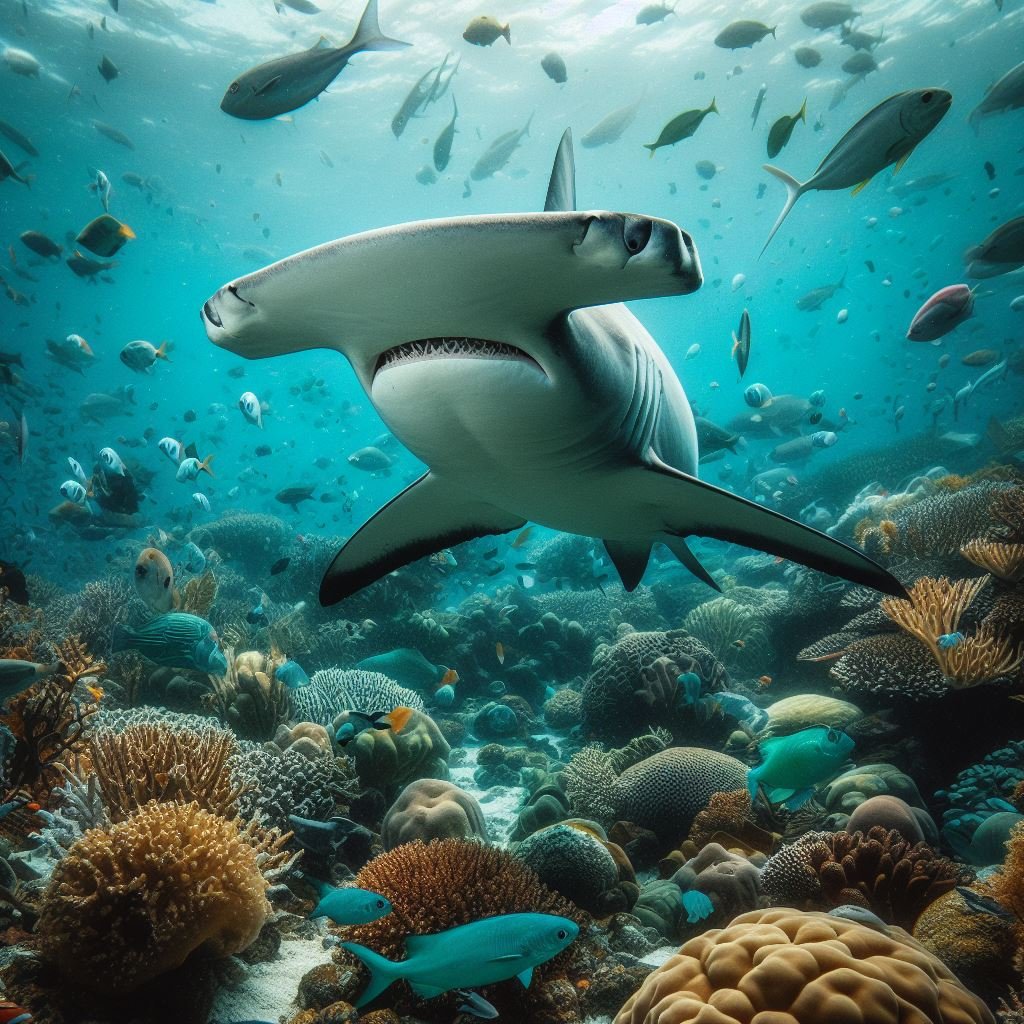
The unique shape of the hammerhead shark’s head allows it to see above and below at all times, giving it a 360-degree view.
22. Sharks Can Sense Heartbeats
Thanks to their electroreceptor organs, sharks can detect the heartbeat of other creatures, helping them find prey even if it’s hidden in sand.
23. The Fastest Shark
The shortfin mako shark is the fastest shark species ever recorded. The shortfin mako shark is capable of swimming at speeds up to 45 mph (72 km/h).
24. Sharks Have Personalities
Research has shown that sharks exhibit individual personalities, with some being more adventurous or sociable than others.
25. Sharks’ Contribution to Science
Shark biology has inspired numerous technological advancements, including improvements in swimsuit design to reduce drag and the development of new medicines.
26. The Goblin Shark’s Slingshot Mouth
The goblin shark has a unique jaw that can extend out to snatch prey in front of it, almost like a slingshot.
27. Sharks Can Be Social
Certain shark species, such as the grey reef shark, exhibit complex social behavior and can form groups, or schools, with defined hierarchies.
28. Some Female Sharks Can Reproduce Without Males
A process called parthenogenesis has been observed in some female sharks, allowing them to reproduce without mating with a male.
29. Sharks’ Ancient Ancestors Were Even Scarier
Megalodon, an ancient shark that lived millions of years ago, makes the great white shark look small in comparison, with estimates suggesting it was up to 60 feet (18 meters) long.
30. Sharks Help Regulate Carbon in the Ocean
By feeding on dead matter and excreting it as waste, sharks help distribute carbon throughout the ocean, playing a role in the global carbon cycle.
31. The Deep-sea Lanternshark
The lanternshark, a small deep-sea shark, emits light from its body, which may camouflage it from predators or lure prey.
32. Sharks Have Been to Space
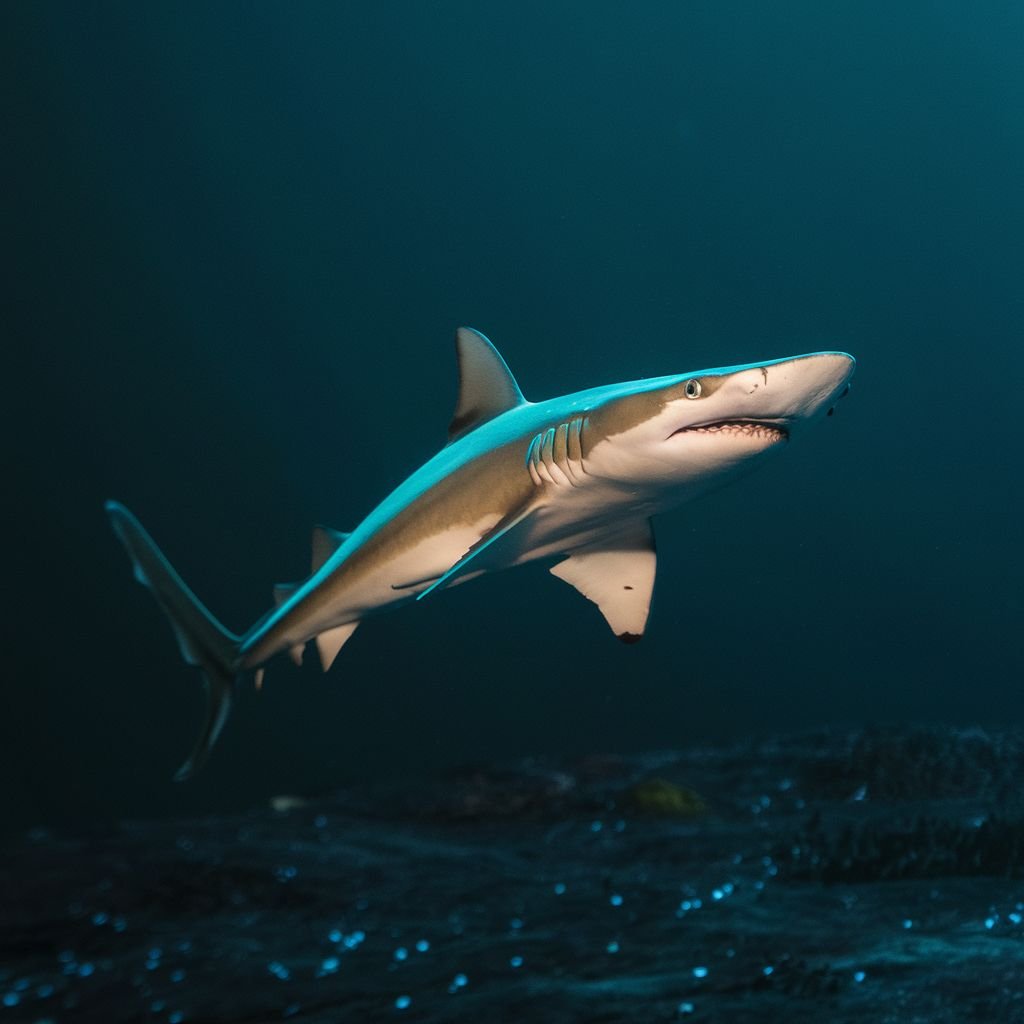
A species of shark, the dogfish, was among the first fish to be sent into space to study the effects of zero gravity on marine species.
33. Not All Sharks Live in the Ocean
The bull shark can live in both saltwater and freshwater and has been found far up rivers, including the Mississippi River in the United States.
34. The Thresher Shark’s Tail Whip
Thresher sharks hunt by using their long tails to whip and stun schools of fish before feeding, a unique hunting strategy among sharks.
35. Sharks’ Role in Mythology and Culture
Sharks have played significant roles in the mythology and culture of many coastal societies, often revered as gods or seen as symbols of strength and guardianship.
36. The Sawfish, a Shark Relative
Despite its name and appearance, the sawfish is actually a relative of sharks and rays, known for its long, toothed rostrum that looks like a saw.
37. Sharks’ Camouflage Abilities
Some shark species have skin patterns that provide camouflage, helping them blend into the ocean floor or the water column to ambush prey or avoid predators.
38. The Risk of Bycatch
Sharks are often caught as bycatch in fisheries targeting other species, a significant threat to their populations worldwide.
39. Sharks’ Importance to Reef Health
Reef sharks play a key role in maintaining the health of coral reefs by controlling the population of herbivorous fish, which, in turn, helps keep algae growth in check.
40. The Blacktip Reef Shark’s Nursery Areas
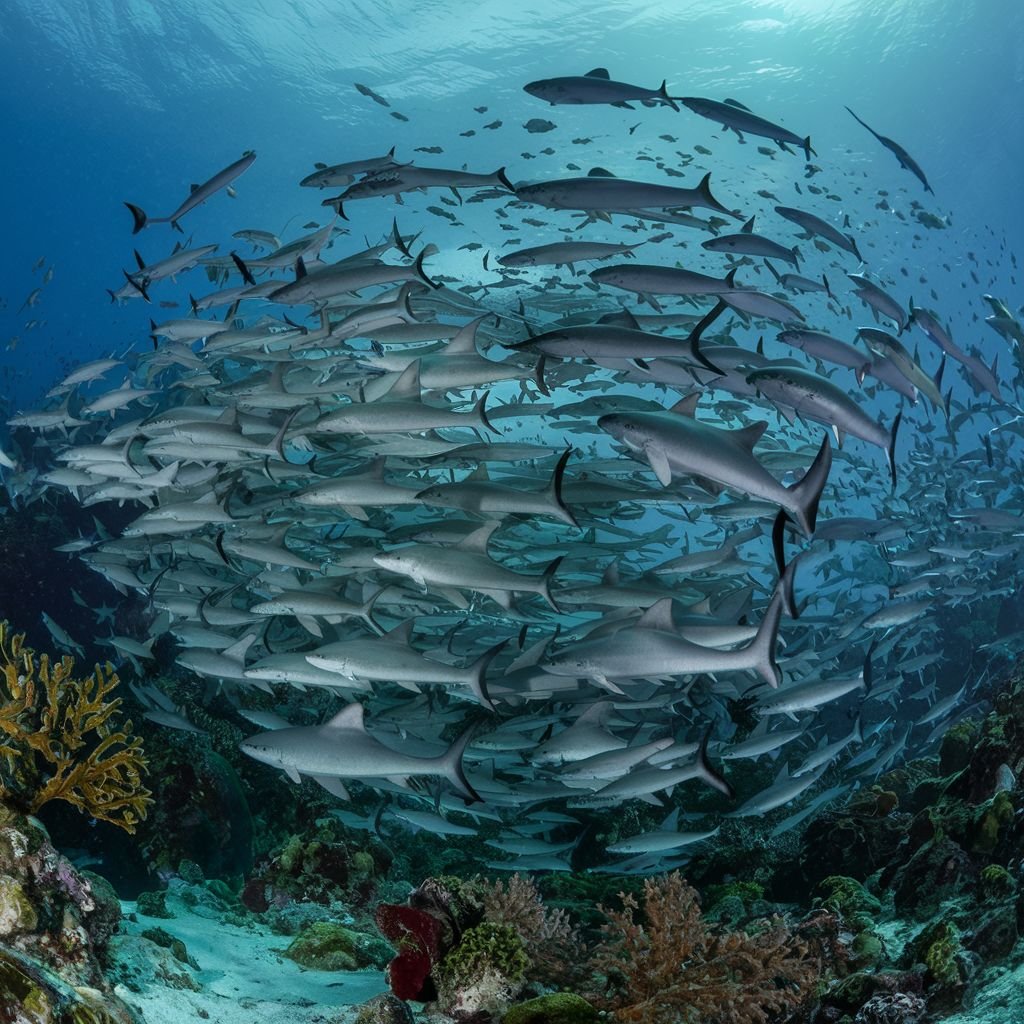
Blacktip reef sharks often use shallow, mangrove-fringed areas as nurseries for their young, providing protection from larger predators.
41. The Sense of Sound in Sharks
Sharks are sensitive to low-frequency sounds, which they can detect from great distances, helping them find prey or navigate to
42. Sharks Have Remained Unchanged for Millennia
Some shark species have remained virtually unchanged for over 100 million years, showcasing an evolutionary design so effective that it has needed little alteration to thrive in the ocean’s diverse habitats.
43. Sharks’ Role in Marine Tourism
Shark diving has become a popular and lucrative aspect of marine tourism, attracting thrill-seekers and wildlife enthusiasts to experience these magnificent creatures up close, often leading to increased awareness and support for shark conservation efforts.
44. The Mystery of Shark Sleeping Habits
Unlike most animals, many sharks do not sleep in a conventional sense; instead, they enter periods of rest while still swimming to ensure water flows over their gills for oxygen, a fascinating adaptation to their aquatic life.
45. Sharks Can Heal Remarkably Fast
Sharks have an extraordinary ability to heal from injuries quickly, including severe wounds from fights or fishing gear, showcasing their resilience and the effectiveness of their immune system.
46. The Zebra Shark’s Dramatic Color Change
Zebra sharks undergo a dramatic color transformation from birth to adulthood; juveniles have stripes like a zebra, while adults sport a pattern of spots, leading to some confusion in their common naming.
47. Sharks’ Unique Reproductive Methods
Shark reproduction varies widely among species, with some laying eggs (oviparous), some birthing live young after hatching eggs internally (ovoviviparous), and others having a placenta-like structure to nourish embryos (viviparous), reflecting a fascinating range of reproductive strategies.
48. The Social Lives of Hammerhead Sharks
Schools of hammerhead sharks, sometimes numbering in the hundreds, have been observed, particularly in regions where they gather to breed or feed, challenging the misconception that all sharks are solitary predators.
49. Shark Fins Have a Range of Uses
Shark fins, highly valued in some cultures for their supposed health benefits and as a status symbol, are used in traditional dishes like shark fin soup, driving a controversial trade that threatens many shark populations.
50. The Sensitivity of Sharks to Ocean Health
Sharks, as apex predators, are key indicators of ocean health, with declines in their populations often signaling broader ecological problems due to factors like overfishing, habitat loss, and pollution.
51. The Port Jackson Shark’s Distinctive Look
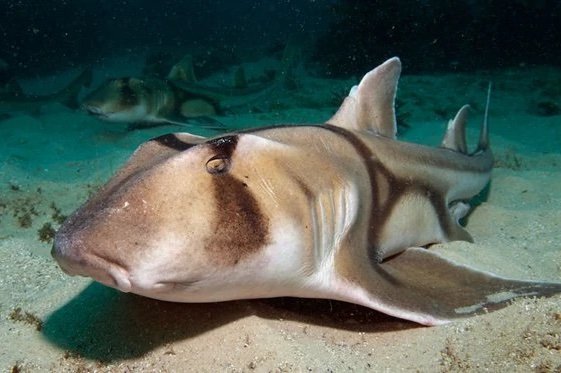
The Port Jackson shark boasts a unique harness-like pattern across its back and a head that appears almost human-made, showcasing the incredible diversity of shark appearances.
52. Sharks in Freshwater Environments
While most sharks are found in saltwater, certain species, like the river sharks of the genus Glyphis, are capable of living in or migrating into freshwater rivers, displaying remarkable adaptability.
53. The Importance of Sharks in Local Economies
In some regions, sustainable shark tourism generates more revenue than shark fishing, providing a compelling economic argument for the conservation of these species and the health of marine ecosystems.
54. The Evolutionary Secrets of Sharks
Studying sharks provides scientists with crucial insights into evolutionary biology, offering clues about the development of vertebrate species and the adaptation mechanisms that have allowed sharks to survive through mass extinctions.
55. Sharks’ Contribution to Water Quality
By preying on sick and weak individuals, sharks help maintain healthy fish populations, indirectly contributing to the overall water quality and stability of marine environments.
56. The Wobbegong Shark’s Camouflage
Wobbegong sharks, with their flattened bodies and fringed appearance, are masters of camouflage, blending seamlessly with the ocean floor to ambush unsuspecting prey, illustrating nature’s incredible adaptations for survival.
57. Shark Nursery Areas
Certain shark species designate specific areas as nurseries for their young, where the shallow waters offer protection from larger predators and abundant food sources, underscoring the importance of protecting these vital habitats.
58. The Intuition of Sharks
Sharks possess an uncanny sense of intuition when it comes to detecting prey, changes in their environment, or even the approach of divers, often altering their behavior long before they are visible, a testament to their keen survival instincts.
59. The Versatility of Shark Diets
Shark diets are incredibly versatile, with some species feasting on plankton, others hunting fish or seals, and still others scavenging on dead animals that fall to the ocean floor, showcasing a wide range of feeding strategies that allow them to thrive in diverse marine ecosystems.
60. Conservation Efforts Tailored to Sharks
Conservation efforts for sharks are increasingly tailored to the unique needs and behaviors of different species, involving protected areas, fishing restrictions, and international treaties, highlighting the complexity of shark conservation.
61. The Misunderstood Reputation of Sharks
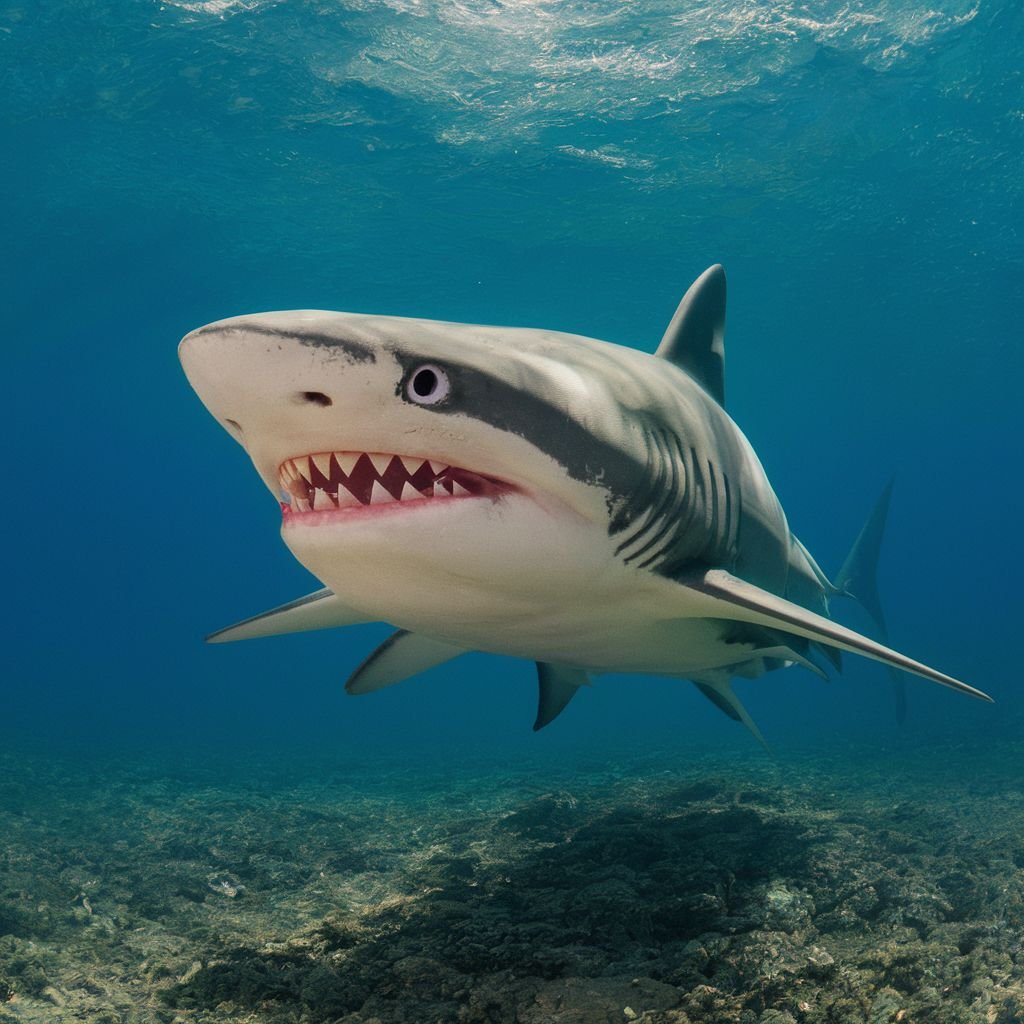
Despite their fearsome reputation, sharks are typically not dangerous to humans, with most species posing no threat at all; understanding and respecting these magnificent creatures can lead to safer interactions and appreciation of their role in the ocean.
62. The Sensory World of Sharks
Sharks experience the world through a complex sensory system that includes not only sight, smell, hearing, taste, and touch but also the ability to detect electrical fields and pressure changes, offering them unparalleled skills to interact with their environment.
63. Sharks as Symbols of Ocean Health
Increasingly, sharks are recognized as symbols of ocean health and resilience, with their presence indicating well-balanced ecosystems, inspiring efforts to protect these vital marine environments.
64. Sharks in Popular Culture
Sharks have captivated the human imagination, featuring prominently in movies, literature, and folklore, sometimes as villains but increasingly as subjects of fascination and admiration, reflecting our complex relationship with these creatures.
65. The Research Value of Sharks
Sharks continue to be invaluable to scientific research, offering insights into marine biology, evolutionary history, and even potential medical breakthroughs, such as the study of shark cartilage in relation to cancer research.
66. The Global Distribution of Sharks
Sharks inhabit all the world’s oceans, from shallow coastal waters to the deep sea, and even under Arctic ice, demonstrating their incredible adaptability to different marine environments.
67. Sharks’ Impact on Island Cultures
In island cultures around the world, sharks have been revered as deities, ancestors, or protectors, playing central roles in spiritual and community life and reminding us of the deep connections between humans and the natural world.
68. The Future of Shark Conservation
The future of shark conservation lies in a balanced approach that includes scientific research, public education, policy change, and community engagement, aiming to ensure sharks continue to thrive for generations to come.
69. The Resilience of Sharks
Sharks’ resilience, evident in their survival through multiple mass extinctions and environmental changes over millions of years, underscores their importance as a keystone species in marine ecosystems, warranting our respect and protection.
70. The Celebration of Sharks
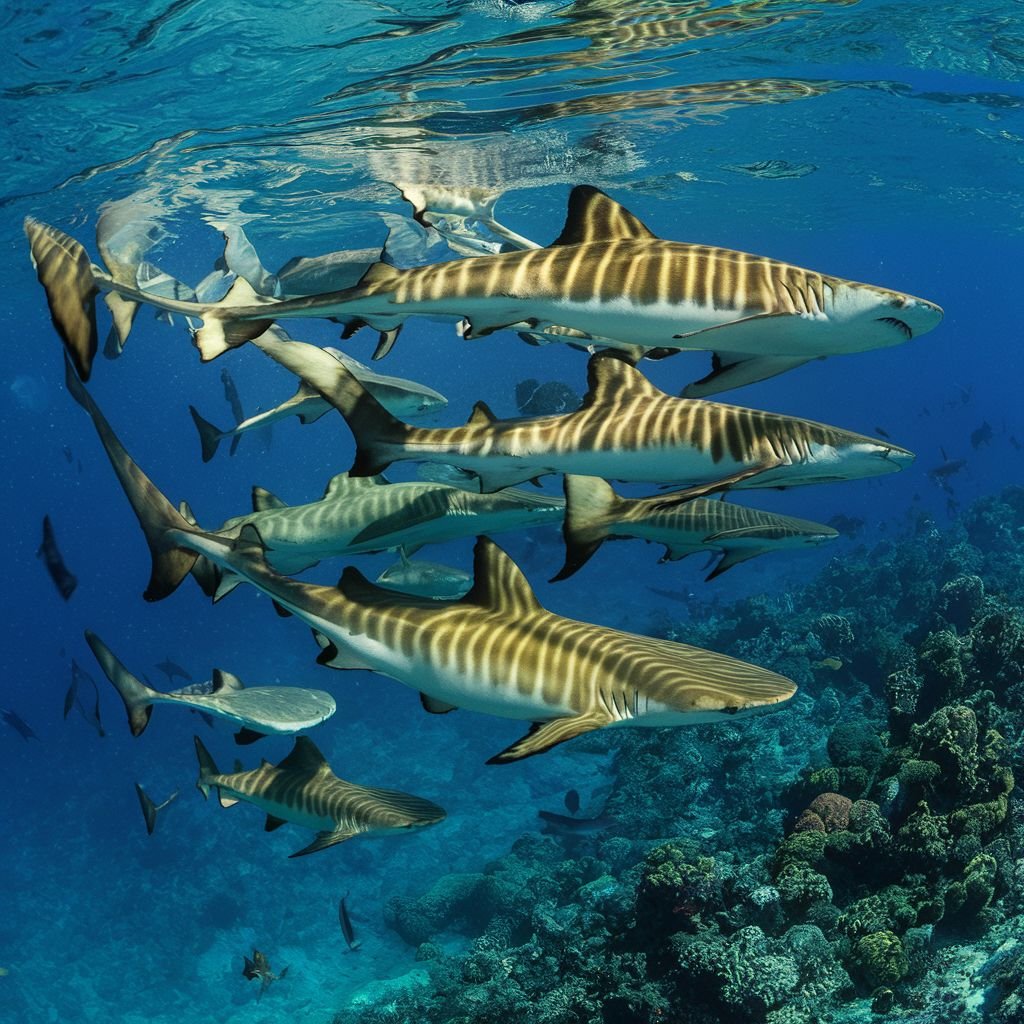
Annual events like Shark Week have become global phenomena, celebrating sharks through documentaries, research highlights, and conservation messages, increasing public interest and support for these misunderstood creatures.
71. Shark Teeth as Fossils
Shark teeth are among the most common types of fossils found, giving scientists significant insights into the history of sharks and the environments they lived in millions of years ago.
72. Sharks and Coral Reef Health
Sharks play a critical role in maintaining the health and balance of coral reef ecosystems by controlling the population of smaller fish that can overgraze on vital reef-building algae.
73. Sharks’ Impact on Marine Tourism
In regions where sharks are abundant, they have become a central attraction for divers and snorkelers, contributing significantly to local economies through ecotourism and marine conservation efforts.
74. Shark Finning and Conservation Challenges
The practice of shark finning—removing a shark’s fins and discarding the body at sea—presents a significant conservation challenge, leading to international campaigns and legislation aimed at ending this destructive practice.
75. The Adaptive Strategies of Sharks
Sharks exhibit a range of adaptive strategies that have allowed them to survive for millions of years, including migratory patterns, social behaviors, and varied reproductive strategy.
76. Sharks in Art and Literature
Throughout history, sharks have inspired artists and writers, appearing in art, literature, and folklore across cultures as symbols of power, mystery, and the unknown.
77. Sharks as Indicators of Ocean Pollution
As apex predators, sharks accumulate toxins from their prey, making them important indicators of the health of marine ecosystems and the impact of pollution on ocean life.
78. The Engineering Inspiration from Sharks
Sharks have inspired engineers and designers in fields ranging from aerospace to swimwear, with their streamlined shapes and skin textures leading to innovations that mimic their efficiency and speed.
79. Sharks’ Unique Breeding Behaviors
Sharks exhibit a wide range of unique and fascinating breeding behaviors, including elaborate courtship rituals, migration to specific birthing grounds, and even asexual reproduction in some cases.
80. Sharks and Climate Change Adaptation
Research suggests that some shark species may be adapting to climate change, altering their range and migration patterns in response to warming oceans and shifting prey distributions.
81. Public Misconceptions About Sharks

Public misconceptions about sharks often stem from sensationalized media portrayals and a lack of accurate information, underscoring the importance of education in changing perceptions and promoting conservation.
82. Sharks’ Role in Marine Debris Studies
Studies on sharks, particularly those that ingest plastics and other marine debris, contribute valuable data on the extent and impact of pollution in the ocean, informing cleanup and prevention strategies.
83. The Cultural Significance of Shark Teeth
In many cultures, shark teeth have been used as tools, weapons, and ornaments, and they hold significant cultural value as symbols of protection, strength, and connection to the sea.
84. Shark Nursery Areas and Conservation
Protecting shark nursery areas, where young sharks are more vulnerable to predators and human impacts, is a crucial focus of marine conservation efforts, aiming to ensure the survival of the next generation.
85. Sharks’ Contribution to Marine Science
Sharks contribute to marine science by serving as subjects in studies of navigation, social behavior, sensory perception, and ecological roles, broadening our understanding of the marine world.
86. The Threat of Overfishing to Sharks
Overfishing poses a significant threat to shark populations, with many species caught unintentionally as bycatch or targeted for their fins, meat, and other products, leading to calls for sustainable fishing practices.
87. Sharks in Aquariums and Marine Parks
Sharks in aquariums and marine parks provide opportunities for education and research, helping to raise awareness about the diversity of shark species and the importance of conserving their natural habitats.
88. The Global Distribution of Sharks
Sharks inhabit all of the world’s oceans, from shallow coastal waters to the deep sea, and even under Arctic ice, demonstrating their incredible adaptability to different marine environments.
89. Conservation Success Stories
Successful shark conservation stories, such as the recovery of certain populations due to protective measures, serve as inspiring examples of what can be achieved with concerted effort and international cooperation.
90. Sharks’ Sensory Adaptations
Sharks possess a remarkable range of sensory adaptations, including the ability to detect minute electrical fields, sense pressure changes, and navigate using the Earth’s magnetic field, showcasing their evolutionary refinement.
91. Shark-Based Citizen Science Projects
Citizen science projects involving sharks, such as photo identification and tracking programs, engage the public in conservation efforts and contribute valuable data to shark research.
92. Sharks and Marine Protected Areas
The establishment of marine protected areas (MPAs) where fishing is restricted or prohibited has been shown to benefit shark populations, highlighting the effectiveness of MPAs in marine conservation.
93. The Role of Sharks in Ecotourism
Ecotourism focused on sharks, when conducted responsibly, can provide economic incentives for local communities to conserve sharks and their habitats, promoting conservation through sustainable development.
94. Sharks’ Influence on Ocean Literacy
Sharks play a role in promoting ocean literacy, inspiring curiosity and respect for the marine environment among people of all ages through educational programs, documentaries, and interactive experiences.
95. Innovative Technologies for Shark Research
Advancements in technology, including satellite tagging, drone surveillance, and underwater robotics, are enhancing the study of sharks, opening new frontiers in understanding their behaviors, movements, and interactions with their environment.
96. Sharks and the Balance of Marine Ecosystems
As apex predators, sharks help maintain the balance of marine ecosystems by controlling the population of prey species, preventing overgrazing of vital habitats such as coral reefs and seagrass beds.
97. Shark Conservation and International Law
International laws and agreements, such as CITES (the Convention on International Trade in Endangered Species of Wild Fauna and Flora), play a crucial role in regulating the trade of shark products and promoting the conservation of vulnerable species.
98. The Role of Sharks in Regulating Disease
By preying on weak and sick individuals, sharks help regulate disease within marine populations, contributing to the overall health and resilience of aquatic ecosystems.
99. Sharks as Icons of Marine Majesty
Sharks are often celebrated as icons of marine majesty and mystery, embodying the untamed beauty and complexity of the ocean, and reminding us of the need to respect and protect our natural world.
100. The Ongoing Need for Shark Conservation
Despite growing awareness and conservation efforts, many shark species continue to face threats from human activities, highlighting the ongoing need for action to ensure their survival and the health of the oceans they inhabit.








